The WORST episodes of The New Yankee Workshop
Every episode of The New Yankee Workshop ever, ranked from worst to best by thousands of votes from fans of the show. The worst episodes of The New Yankee Workshop!
In this PBS series, craftsman Norm Abram demonstrates how to build quality furniture in one's own workshop using traditional carpentry techniques. Abram also gives pointers on restoring and caring for antique furniture, along with short history lessons regarding famous craftsmen of America's past.
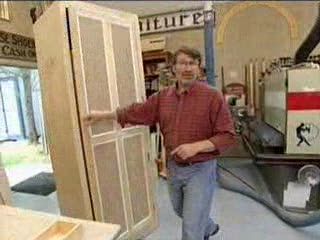
#1 - Kitchen Project - The Pantry (5)
Season 20 - Episode 5 - Aired 2/2/2008
Norm uses techniques demonstrated in the previous episodes to build the carcass and face frame of the pantry. He uses box joints to build storage boxes on the inside of the pantry door. (Part 5 of 9)
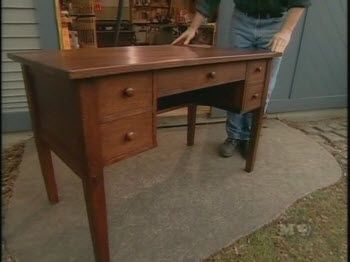
#2 - The Mission Style Desk
Season 16 - Episode 12 - Aired 3/27/2004
Prowling through an arts and crafts shop of highly collectable Stickley and other Mission style period furniture, Norm discovers a wonderful oak desk he hopes to use for a small computer. It is an original 1910 Oak Knee Hole Desk made by L&JG Stickley. Made of oak and finished in the appropriate color and glaze, Norm will be using this sturdy desk for his own home.
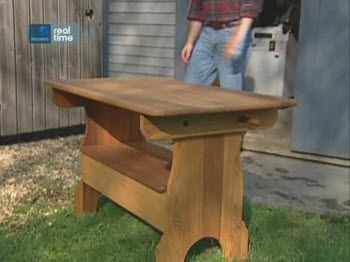
#3 - Bermuda Bench/Table
Season 17 - Episode 2 - Aired 1/15/2005
Every time Norm does an outside project it is an instant hit. This will be no exception. It’s a useful all-weather convertible bench/table. He found it in an old house in Saint Georges, Bermuda and thought it would be perfect for a New Yankee Workshop project. Made of rot-resistant cypress, this will only get more beautiful with age.
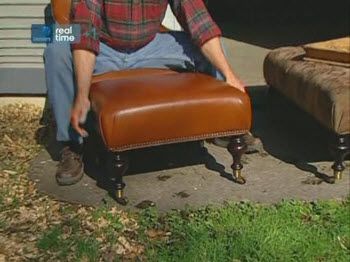
#4 - Ottoman
Season 17 - Episode 3 - Aired 1/22/2005
Encouraged by his success in building the upholstered cigar chair in Season 15, Norm partners once again with furniture guru Norman Coley to build an oversized ottoman that today’s decorators simply must have. Norm visits the semi-annual world famous Chapel Hill, North Carolina furniture market to select the model he will build in the New Yankee Workshop. While he is at it, he adds a leather-covered footstool to go with his cigar chair.

#5 - Bermuda Chest
Season 17 - Episode 4 - Aired 1/29/2005
Bermudans call themselves "Onions" perhaps because of those succulent pungent bulbs they have grown for hundreds of years. But onions also appear as wooden buns, or feet, to keep their blanket chests off the damp floors of that seaside nation. Norm, on his trip to Bermuda, finds a historic example in the form of a well-proportioned solid mahogany chest which he is able to reproduce faithfully back at the shop.
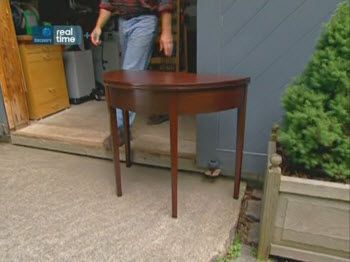
#6 - Federal-Style Game Table
Season 17 - Episode 5 - Aired 2/5/2005
With no television and few newspapers to read, our ancestors had plenty of time for card games thus, game tables were very popular. They often featured circular tops that were hinged and could be folded, designed to be stored against the wall when not in use. When needed, the top flipped down on a hinged gate leg and was suitable for four card players. Norm discovered an example in historic Deerfield, Massachusetts, which he used as inspiration for his piece.
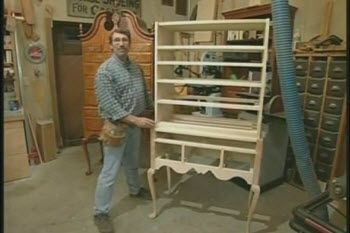
#7 - Highboy (1)
Season 17 - Episode 9 - Aired 3/5/2005
Never in the history of The New Yankee Workshop has there been a more challenging project. This bonnet-topped Queen Anne-legged tiger maple highboy is a classic in every sense of the word. Even the reproduction hardware is rare. Joining Norm in the search for a suitable highboy that Norm can reproduce are Leigh and Leslie Keno, much respected furniture experts from the PBS show "FIND." They take Norm to Leigh’s gallery in New York City and show him a glorious original they believe was built in Wethersfield, Connecticut in the early 19th century. It takes Norm two programs to complete the magnificent project and those who have seen it say it is well worth his time and effort.

#8 - Highboy (2)
Season 17 - Episode 10 - Aired 3/12/2005

#9 - Workshop Helpers
Season 18 - Episode 3 - Aired 1/21/2006
Everybody knows Norm likes to work alone. Although he does get some help finishing the projects, Norm does the wood working all by himself. Sometimes that’s not easy, so Norm finally decided to enlist the help of some workers who never show up for work late, never get tired, and are willing to work until the job is done. Meet them. Roller Stand: a sturdy, height adjustable, rugged stand for use as an out feed appliance for the table saw, the band saw, or the drill press. It even comes to work ready with its own homemade, self-storing crank. Stock Cart: a lightweight, very strong, wheeled wagon that comes with five shelves to organize the parts needed to complete a project and travels from machine to machine, carrying the parts as needed. Mobile Tool Stand: a shop-built table to support bench top tools like planers, small saws, and jointers that, when combined with a mobile base, can add versatility and convenience to any shop.
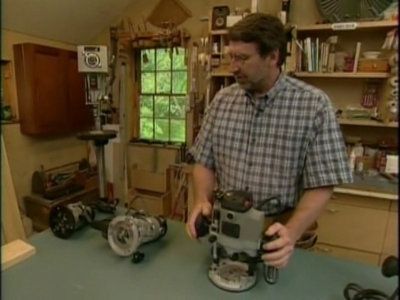
#10 - Router 101 (1)
Season 18 - Episode 6 - Aired 2/11/2006
Is there a woodworker anywhere who doesn’t own a router? Ever since these ubiquitous power tools were invented many years ago, craftsmen like Norm have been devising ways to use them for a wide variety of useful tasks. Norm begins this special two-part program with a demonstration of both the standard base and the plunge type router and declares his preference. He also shows some of his favorite bits for creating both simple and complex edges on his projects. Then, Norm turns to the task of making perfect mortises for hinges by creating a jig that allows even a novice to achieve perfect results every time. Next, Norm uses the router and builds another home-built jig to form precise dadoes in shelf standards, elements he might build for a bookcase project. In part two of this router special, Norm begins with a demonstration of commercial router tables and moves on to show his version of a router station that so many of his fans have copied for their own workshops. With it, Norm shows the step-by-step procedure of making raised panel cabinet doors. Next, Norm uses a homemade circle-cutting jig to form perfect circles of various diameters with a router. Also included are instructions and a demonstration on how to make inlays using a router.
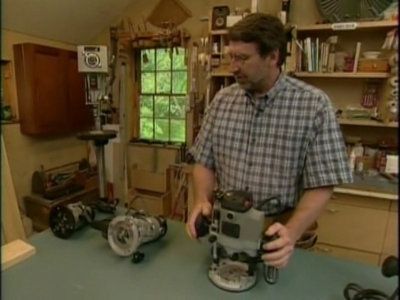
#11 - Router 101 (2)
Season 18 - Episode 7 - Aired 2/18/2006
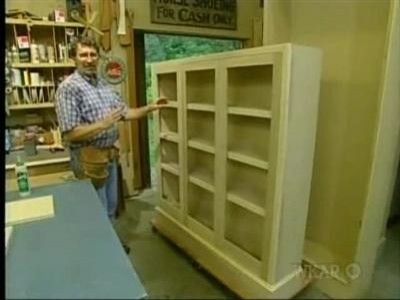
#12 - Greek Revival Bookcase
Season 18 - Episode 9 - Aired 3/4/2006
While prowling a designer show house, Norm discovers a handsome collection of bookcases built in the Greek Revival tradition. Although they are made of plywood, every detail gives the appearance of solid tablets of white stone. The shelves resemble slabs of marble and the cornice on the tall case might have been carved from stone in the manner of a Greek temple. Glass doors enclose the lower bookcase element and swing on concealed European hinges. No mere bookcases here; they are worthy of your finest volumes and your most valued treasures.

#13 - Storage Shed
Season 18 - Episode 10 - Aired 3/11/2006
Taking his cue from a pool house he finds on Nantucket, Norm creates a relatively simple, multipurpose structure so coveted by today’s homeowners. It could be a garden shed, a place to store the outdoor furniture for the winter, a pool house, or a home for the family bicycles and yard machines. This 96-square foot building is the perfect size for many backyards and features low-maintenance materials that are expected to hold paint and resist weather. Best of all, it is attractive to look at and relatively easy to build.
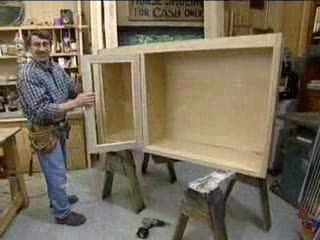
#14 - Kitchen Project - The Wet Wall (4)
Season 20 - Episode 4 - Aired 1/26/2008
Norm demonstrates how to construct the wet wall cabinets by attaching a face frame to the cabinet using glue and biscuits. He crafts doors with solid MDF panels, glass panels, and offers tips for installing drawer runners. He uses a special jig to fit the wet wall shelves. (Part 4 of 9)
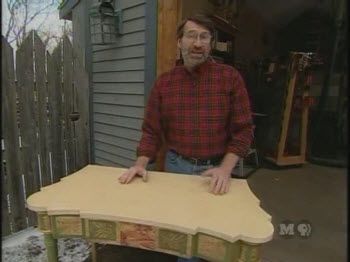
#15 - The Pier Table
Season 16 - Episode 10 - Aired 3/13/2004
A pier table is a small table that is meant to be located between two windows. Norm finds a beautiful example of one at GKS Bush Antiques on Nantucket, Massachusetts. Made of poplar and beautifully painted with classic designs and a faux marble top, the original is stunning. Norm builds a copy and has it painted to match the original.
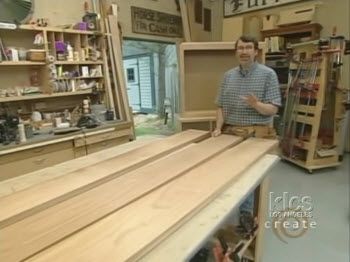
#16 - Kitchen Project - The Bar (8)
Season 20 - Episode 8 - Aired 2/23/2008
Norm uses natural cherry to construct the wet bar, which is separated from the kitchen. It has a small copper sink and natural cherry paneled walls. The counter top is made of cheery and the bar has a wine cooler, mirrored surfaces, glass shelves, and concealed lighting. Norm adds twin glass-paneled doors as a finishing touch. (Part 8 of 9)

#17 - Kitchen Project - Finish and Install (9)
Season 20 - Episode 9 - Aired 3/1/2008
Norm adds two undercoats of spray finish and a coat of brush-on finish to the cabinets. He begins the process of installing the cabinets by surveying the space, analyzing the conditions, creating a level reference line, and setting the cabinets to floor and wall. Once he's completed that, he installs the cabinets to complete the kitchen upgrade. (Part 9 of 9)

#18 - All-Weather Loveseat
Season 20 - Episode 11 - Aired 3/15/2008
Norm builds a love seat with traditional Teak and all-weather fabric.
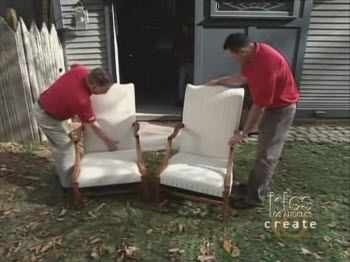
#19 - Lolling Chair
Season 20 - Episode 12 - Aired 3/22/2008
Antiques expert Gary Sullivan assists Norm with research needed to build and upholster a reproduction of a lolling chair.

#20 - Tap Table
Season 20 - Episode 13 - Aired 3/29/2008
Norm reproduces a tap-room table he finds at the Antiques Gallery of Ronald Bourgeault. The table has turned maple legs, a round pine top, and a painted patina. It measures 28" round and 26" tall.
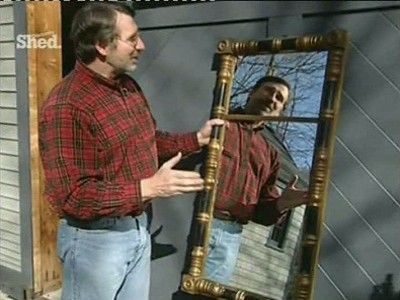
#21 - Guiltwood Mirror
Season 19 - Episode 1 - Aired 1/6/2007
Norm builds a reproduction of a Federal style Giltwood Mirror. Gilding the mirror with gold leaf so the frame appears to be solid gold is a challenging project. The mirror dimensions are 21� wide x 41� in height.
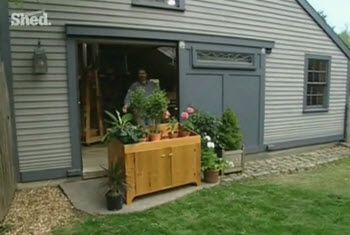
#22 - Old Pine Dry Sink
Season 19 - Episode 3 - Aired 1/20/2007
Norm builds an old pine dry sink out of recycled pine after visiting the Arlington House in Virginia. The sink dimenisons are 48" long x 21" wide x 37" high.

#23 - Painted Cupboard
Season 19 - Episode 7 - Aired 2/17/2007
Norm builds his version of the painted cupboard which can be found in the Winterthur Museum in Delaware. The cupboard dimensions are 11" deep x 31" wide x 88" high.
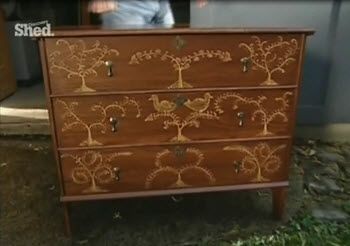
#24 - Taunton Chest
Season 19 - Episode 10 - Aired 3/10/2007
Norm builds a unique version of an early American Taunton chest. The chest measures 38" long x 18" wide x 33" tall.

#25 - Colonial Style Mantel
Season 18 - Episode 1 - Aired 1/7/2006
After tackling more pressing projects, Norm is finally getting around to building a mantelpiece for the master bedroom in his home. Though his home is filled with the beautiful furniture he has made over the years at the New Yankee Workshop, somehow he never took the time to complete the most defining architectural element in his bedroom – the fireplace mantel. Now, instead of waking up to an unfinished brick and plaster wall, he looks at a beautiful Colonial mantelpiece that frames the master bedroom’s fireplace. The project involves using the router table to produce the frames to receive the m.d.o. plywood panels and make a molding, some precise work with the mitre saw, and installation of the completed mantelpiece. As always, Norm makes this project seem within reach of most average woodworkers